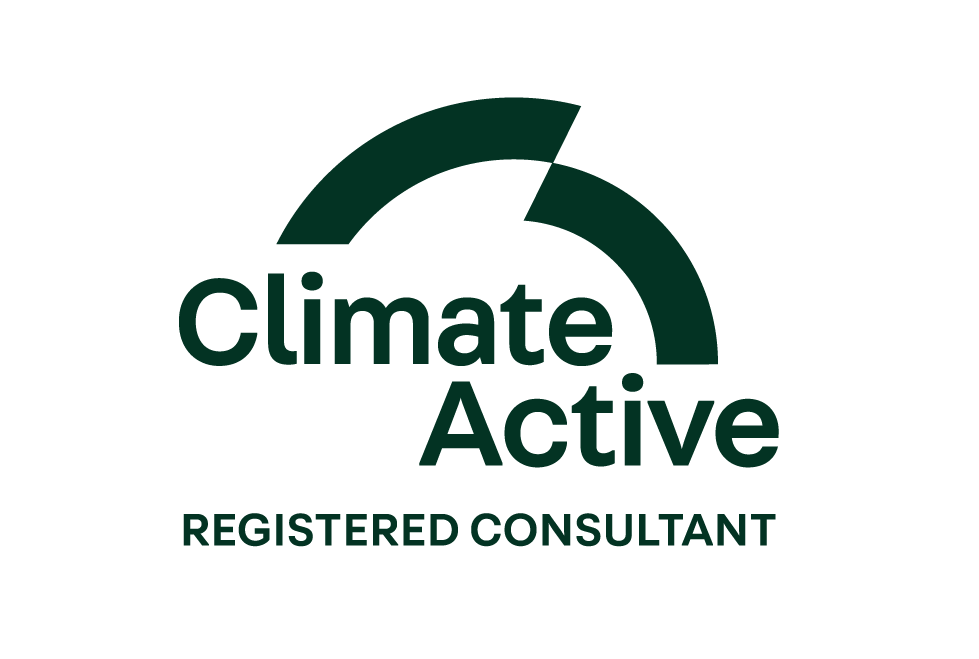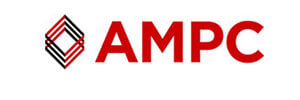Your Path to Carbon Management
Take control of your business’s carbon emissions, reduce energy costs, and meet reporting requirements
At The Ecoefficiency Group, we specialize in effective carbon management solutions that help your business reduce your carbon footprint and save money through reduced energy costs. We can help you to set realistic carbon reduction goals and progress them through careful strategy and targets. Our team of experts is here to guide you every step of the way.
We have the experience and insight to help your business adopt voluntary reporting through Climate Active or one of the many international reporting platforms. We can help you to understand and meet your commitments under the new mandatory climate-related financial disclosure reporting requirements.
Take a Step-Wise Approach
Gap Analysis and Roadmap
If you are at the start of the journey and looking for guidance, understanding and assistance, then the Ecoefficiency Group can help. We can help whether your business is looking at carbon management from a voluntary perspective, supply commitments, or to meet reporting requirements. We can explain reporting requirements and the data needed to meet them, helping you and your staff to understand what’s involved and prepare a realistic gap analysis and roadmap to get there.
Conduct Carbon Footprint (or Greenhouse Gas Emissions Inventory)
We’ll conduct a comprehensive assessment of all the greenhouse gas emissions from each site in your business to provide you with an easy to understand carbon footprint spreadsheet and report, a clear view of strategic positioning, and recommendations on reporting requirements, and any improvements for future footprints. Methods used are compliant with the Greenhouse Gas Protocol, Climate Active, and the National Greenhouse and Energy Reporting Act, 2007.
Reduce energy costs
We’ll recommend practical steps you can take to further improve energy efficiency and reduce energy costs in your business, in the short, medium and long term. These steps often result in reduced emissions as well.
Set Goals, Strategy and Targets
We’ll work with you to to set realistic carbon reduction goals and progress them through careful strategy and targets. We’ll recommend a way forward whether your focus is on very basic goals or detailed plans, strategy and targets. We can establish a base year, back-calculate emissions in that year, and track emissions reduction against that year. We can conduct scenario modelling that clarifies how emissions are likely to rise and fall into the future.
Meet Reporting Requirements
If you are considering voluntary reporting through Climate Active, or through one of the many international programs like Race to Zero, Science Based Targets or the Carbon Disclosure Project, we can assist you. We’ll also assist you in meeting the new Australian mandatory climate-related financial reporting requirements under the Corporations Act or reporting under the National Greenhouse & Energy Reporting requirements (NGERs).
Working with Offsets
Offsets can be used to improve your business emissions and progress towards goals and targets. We can explain offset types and how they work in Australia, and help you develop an offset plan tailored to you business – whether your focus is on Australian Carbon Credit Units (ACCUs), Large-scale Generation Certificates (LGCs), suppliers offsets or other types of offsets.
Resources and Training
The Ecoefficiency Group has developed surveys and simple spreadsheet tools for in-house inventory and reporting available to clients for repeat in-house emissions inventory. This includes surveys of Working From Home practices and Commuting behaviours of staff. The Ecoefficiency Group has developed its own Working From Home emissions calculator, and Registers for Offsets, Carbon Sequestration and other emissions sources.


Why Choose The Ecoefficiency Group?
Committed to Making a Difference: We believe in the power of sustainable practices to shape a better future for our planet. By partnering with us, you join a community of businesses dedicated to creating meaningful change.
Tailored Environmental Solutions: We understand that every business is unique, and we tailor our services to meet your specific needs. Our experts will work closely with you to develop a comprehensive carbon management plan that aligns with your goals and values.
Leaders in Sustainable Business Practice: With over 20 years of experience, The Ecoefficiency Group has been at the forefront of assisting companies in understanding and reducing their carbon emissions. We have a proven track record of delivering sustainable and economical solutions.
Climate Active Registered Consultant: As registered consultants with Climate Active, we are equipped to help your business achieve carbon neutrality and obtain certification under the Climate Active Carbon Neutral Standard. Whether you’re an organization, precinct, or hosting an event, we have the expertise to support your journey.
We’ve worked with








Take the Next Step Towards Carbon Management
Book a FREE 20 minute call to discuss your needs.
Same thing!
‘Carbon Footprint’ is an older term, but to all intents and purposes means the same thing as ‘Greenhouse Gas Emissions Inventory’.
Greenhouse gases (GHGs) include carbon dioxide (CO2), methane (CH4), nitrous oxide (N2O), sulphur (or sulfur) hexafluoride (SF6), hydro fluorocarbons (HFCs) and perfluorocarbons (PFCs). GHGs are often expressed as a standard unit called a ‘carbon dioxide equivalent’ or CO2e, as the scale and duration of impact arising from the different gases varies. For example, one tonne of methane (CH4) is understood to have 28 times the global warming potential (GWP) of one tonne of carbon dioxide equivalence. So, it has a GWP expressed as 28 t CO2e.
We prefer to call it a Greenhouse Gas Emissions Inventory to remind everyone that it isn’t just about carbon dioxide, but includes all the greenhouse gas. If you want to call it a Carbon Footprint people will know what you mean.
The time required depends on how easy it is for you to find all the data on your emission sources. This gets easier with time but for first-timers it can be slow. Currently we are finding it takes between 3 to 6 months to collect this data from invoices, business records and managers. Once the data is collated, it takes less than a month to generate most inventories. There’s usually a period of review before results are finalised.
Your carbon footprint can be broken down into three different Scopes.
Scope 1 emissions are defined as ‘emissions released to the atmosphere as a direct result of an activity, or series of activities at a facility level’, and are therefore sometimes referred to as ‘direct emissions’. These include for example, fuel combustion (diesel, gasoline, LPG and natural gas) for company vehicles or heating, and fugitive gas emissions (such as refrigerants) from cold storage or air conditioning systems.
Scope 2 emissions are defined as ‘emissions released to the atmosphere from the indirect consumption of an energy commodity’ and are therefore sometimes referred to as ‘indirect’ emissions. For most companies Scope 2 emissions are only from metered electricity purchased from the grid.
Scope 3 emissions are defined as ‘indirect emissions other than scope 2 emissions’ that are generated in the wider economy. They occur because of the activities you undertake, but from sources that you do not own or control. For example business flights, use of sold products and services, and freight of goods.
Gross emissions – are the direct and indirect greenhouse gas emissions of the organisation in one year before accounting for any reductions in that year from sequestration of carbon in trees and soils, offsets by suppliers, carbon neutral products and services purchased or Australian Carbon Credit units (ACCUs) or other offset units purchased and surrendered or the purchase and surrender of large-scale generation certificates (LGCs).
Net emissions – are the total emissions of the organisation in one year after accounting for any reductions in that year from the sequestration of carbon in trees and soils, offsets by suppliers, carbon neutral products and services purchased or purchase and surrender of ACCUs or LGCs. If reductions from these sources (called ‘offsetting’) are minor, there is not much difference between gross and net position.
The benefit in calculating your gross and net emissions allows you to understand the impact your carbon reduction strategies are having on your overall impact.
An emissions strategy may go beyond net zero emissions towards defining a ‘climate positive’ or ‘carbon positive’ commitment.
That is, the impact of the organisation on reducing greenhouse gas emissions will exceed its operational emissions, ensuring that the net impact is positive for the global climate.
‘Carbon negative’ is intended to mean the same thing but the use of the word negative although technically more correct has unwanted implications.
This really depends on what type of sector you are in, the size of your operations and carbon footprint and the certification process you want to go down. We can help you work out the best process that suits your needs and budget.
Typically the fees charged by certification agents for their services are not as significant as the in-house costs of data acquisition, collection, collation and management.
There are also cost implications of some certification requirement. For example, Climate Active requires that certified businesses offset their residual emissions each year using offset credit units such as ACCUs. This can be far more expensive than the costs for certification itself.
No. Many organisations claim carbon neutral status without using certification, but there are risks in this.
To be carbon neutral you determine your carbon footprint each year and purchase offsets (which verify that carbon has been removed from the atmosphere) equivalent to the sum of your emissions.
However, it is important that any claims you make can be backed up with transparent evidence. Third party certification processes such as Climate Active give assurances to you and your clients that you meet criteria and purchased offsets to become carbon neutral.
An alternative to third-party certification is self-inventory and web publishing and web disclosure of progress (data) against claims. Indeed, public disclosure is required by most UN programs such as Race to Zero and Science Based Targets, and under the Carbon Disclosure Project and many other relevant standards and protocols.
The result is that you will have a similar reporting requirement to demonstrate that you are meeting your claims as would be required for certification, but not as rigorous.
Yes! We have assisted many Local Councils, State and Federal government departments with their sustainability initiatives. We are also part of the Local Buy pre-qualified suppliers and may be able to assist you through that pathway.
Some ways we could assist include undertaking GHG inventory work and emissions reduction strategy and planning for you and providing workshops for internal staff training or as an offering to upskill businesses within your region. Book a call with us to discuss how we can help you.
Wherever you are! It is possible to work remotely for carbon accounting as you need to gather the information for us. However we also like to understand your site’s unique circumstances so we are happy to travel anywhere in Australia. Our headquarters are in Brisbane.
We also provide carbon inventory and emissions reduction work for companies with international branches.
